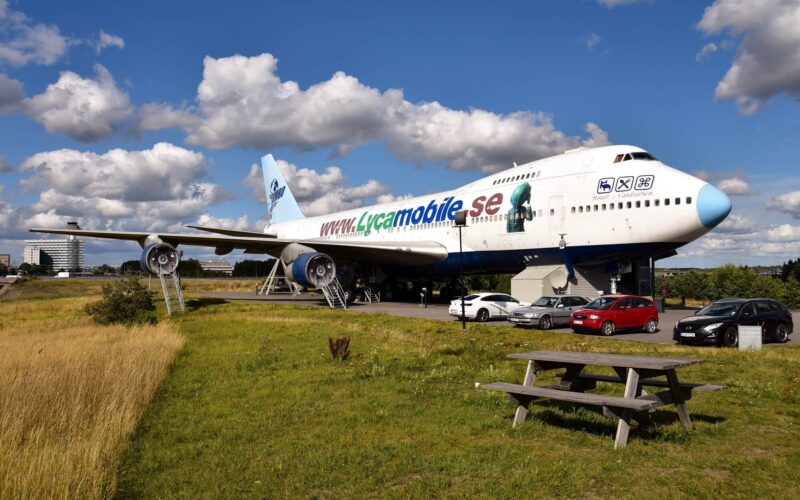As an aircraft approaches the end of its life cycle, some re-usable parts are sold on the secondhand parts market, while the rest is usually scrapped. However, as the aviation industry works to become more sustainable, aircraft recycling has become a growing area.
This includes some innovative, creative and even luxury business concepts from hotel rooms and restaurants to upcycled parts and collectable items.
As June is sustainability month at AeroTime, we are sharing 10 examples of businesses repurposing old aircraft, reducing waste from the aviation industry and creating something incredible in the process.
Founders of a unique glamping pod in Scotland have come up with a creative way to transform an old helicopter into a successful business.
In 2017, the local Stirling farmer, Martyn Steedman bought a retired 17-meter-long (56 ft) former Royal Navy helicopter called ‘Sea King’ for around $8,000 and transformed the aircraft into an exclusive holiday home.
The helicopter, which served the Scottish Navy until 1994, and was later bought by the Ministry of Defense to be used in naval training, now features a bedroom designed to sleep six guests, a kitchen and even its own shower room.
Who knew that a former Navy helicopter could be repurposed to create a luxury holiday experience?
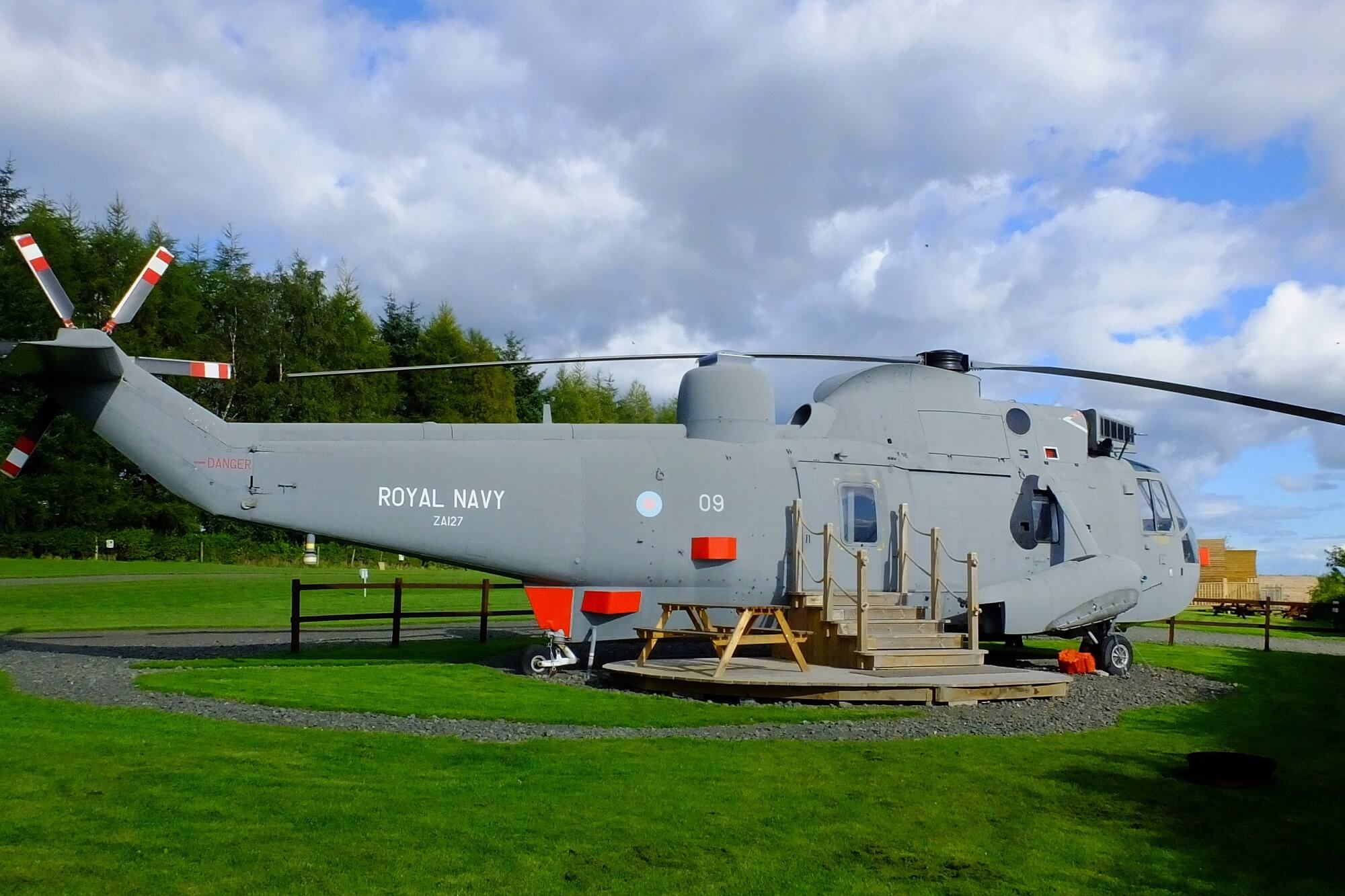
9. From Jumbo plane to ‘Jumbo Stay’
There are many examples of how old planes can be converted into aviation-themed accommodation on the ground as aircraft are ideally suited for the purpose.
A great example is the Stockholm-based hotel ‘Jumbo Stay’, which is located near Arlanda Airport (ARN). The hotel was launched in 2009 when its founder decided to turn a 46-year-old Boeing 747-212B Jumbo jet, also known as the ‘Queen of the Skies’, into a spacious hotel on the ground.
Before its transition, the aircraft had been operated by the now-defunct Swedish airline Transjet, which ceased operations in 2002.
Originally built to fly Singapore Airlines (SIA1) (SINGY) long-haul routes, and later serving Pan Am flights, the wide-body aircraft is now equipped with 33 rooms and can host 76 guests at a time.
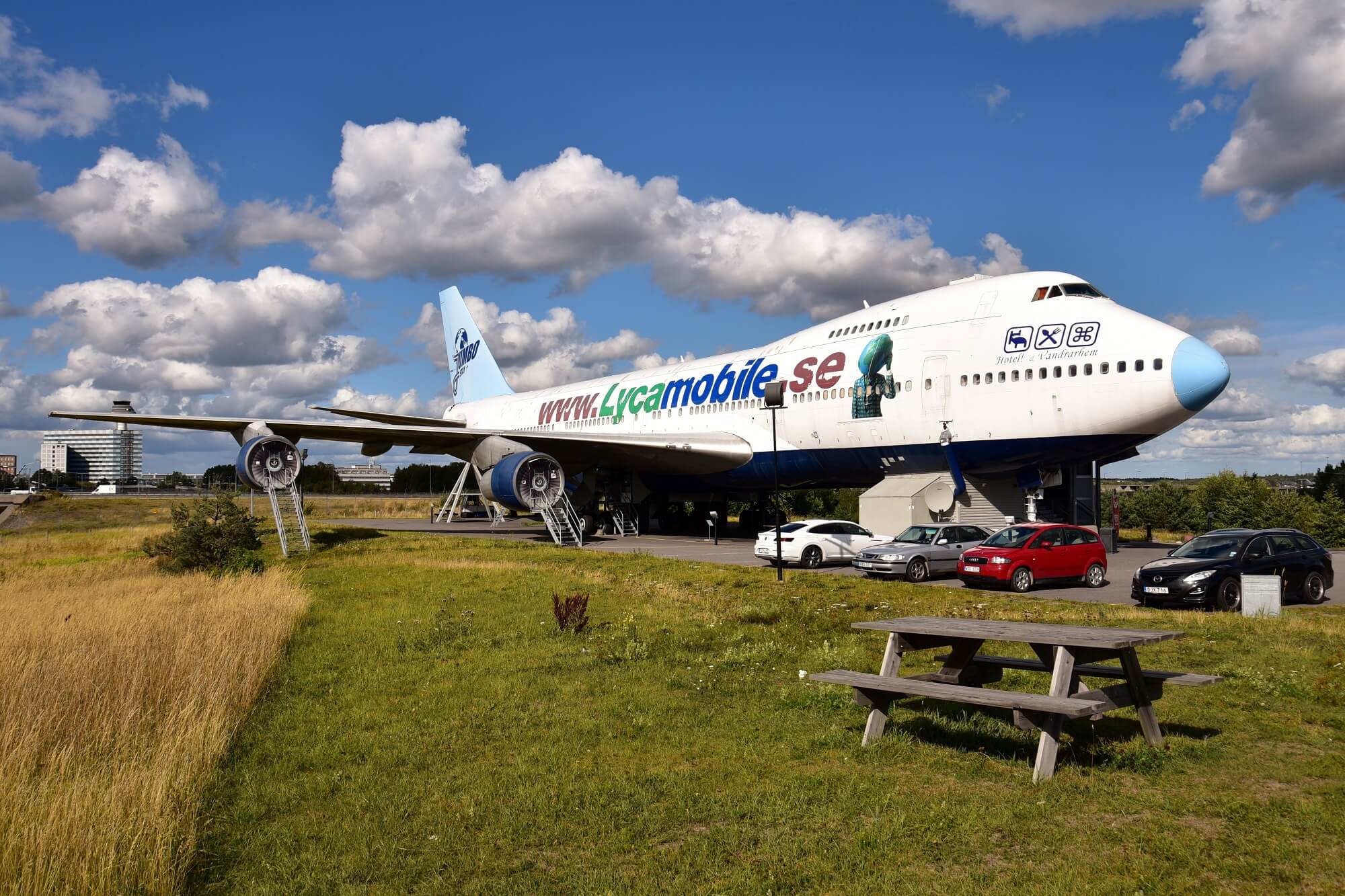
8. Fancy dinner inside a former US Air Force Boeing KC-97 tanker?
Turning a plane into a restaurant or into a hotel is quite a popular business idea.
In 2022, a US-based entrepreneur bought a magnificent US Air Force Boeing KC-97 tanker, built in 1953, which had previously been used to perform plane refueling missions. But since May 2002, the giant plane has served as a Colorado-based dining experience for both aviation enthusiasts and foodies alike.
The dining area can seat 42 guests at a time. The seats are situated inside the aircraft with the remainder located in an outside dining area. The restaurant not only offers a great menu but also displays memorabilia, including aviation history-themed pictures and rare artifacts from the era the aircraft spent in the skies.
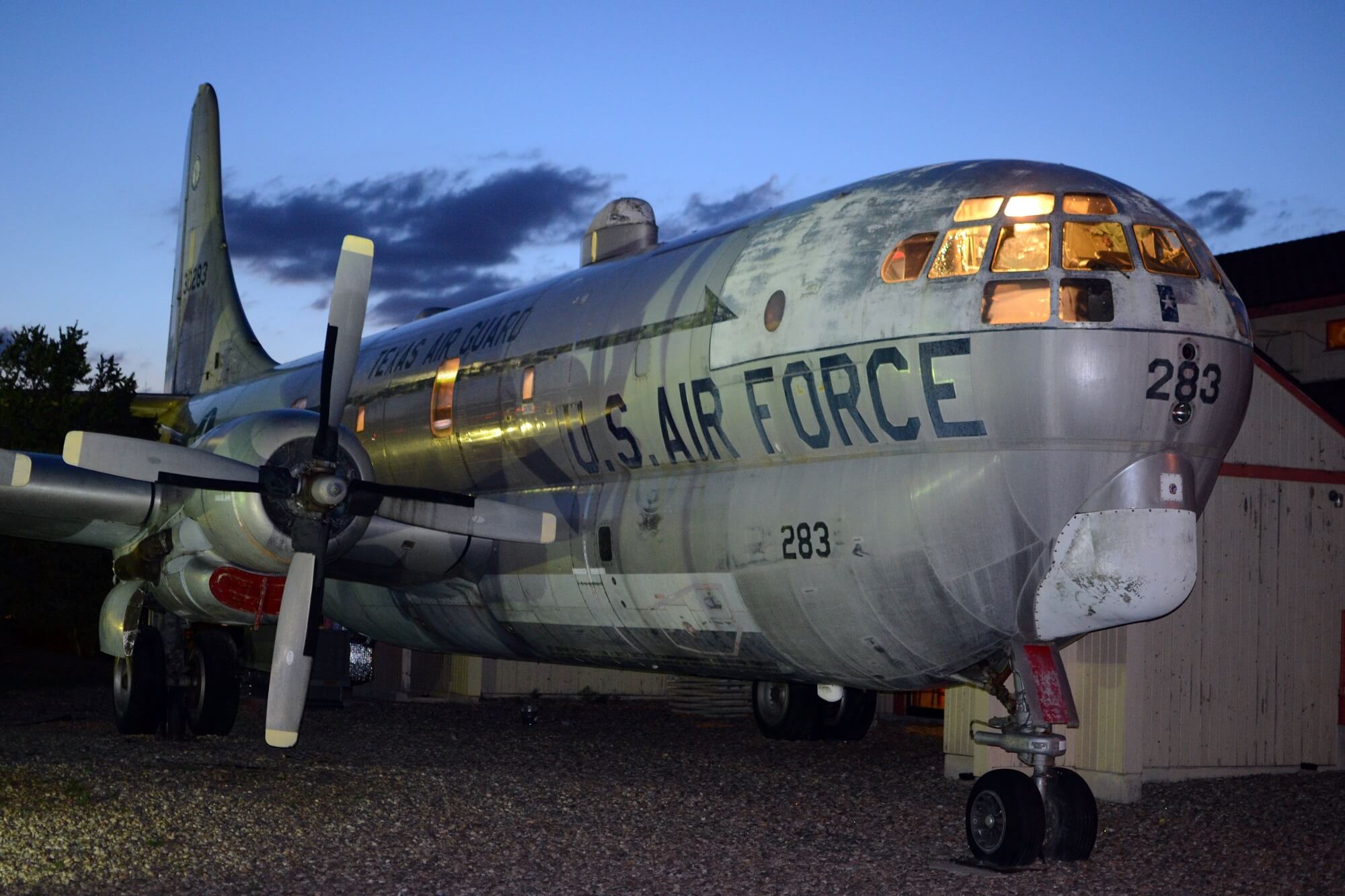
7. British Airways Boeing 747 converted into a ‘party plane’
Nowadays, a party bus doesn’t sound like the most original experience. But have you ever wondered how great it would be to celebrate on an enormous old aircraft repurposed for all your party needs?
During the global pandemic in 2020, many major carriers began to place their older wider-body jets into early retirement. So, Suzannah Harvey, the chief executive of the privately-owned Cotswold Airport near Kemble in England, seized the opportunity to pursue a new business idea. Having invested almost $671,000, Harvey spent 14 months converting a decommissioned British Airways Boeing 747 wide-body aircraft into a modern space for parties, social occasions and even weddings.
The plane, which joined British Airways’ fleet in 1994 and made its last passenger flight on April 6, 2020, has now been given a second life as a trendy events space based at Cotswold Airport.
But renting this magnificent aircraft is not for the feint-hearted (or light of pocket) as rates start at around $1,300 per hour.
6. Reducing waste: creating wallets from upcycled aircraft leather
Spouses Mark and Lisa Krzywinski are both aircraft mechanics who unfortunately lost their aviation roles because of the COVID-19 pandemic. But during the lockdown, the Canadian couple began to make aviation-themed clothing, eventually launching their own brand, Phelix and Co., which soon developed into a successful business.
By Christmas 2020, when the husband-and-wife team realized that it would be a while before they could return to their professional roles, the couple decided to design a few t-shirts printed with the Ontario International Airport code. While these were initially for personal use, the couple saw an opportunity for a new business venture. Their initial attempts went well and attracted the attention of buyers, so the couple decided to print more.
With the support of Canada’s close-knit aviation community, the couple began to expand their business, including more color options, children’s clothing, hoodies, and socks. The couple even branched out to create wallets from up-cycled leather.
Spurred by an awareness of environmental concerns, the couple is now attempting to attract new customers while continuing to introduce upcycled leather products, which are sourced from retired Voyageur Airways and Jazz Aviation aircraft fleet cabins.
5. Collectables handcrafted from aircraft skin
Anthony Friedl, a business analyst from the United Kingdom, has always been passionate about collecting airline memorabilia. However, the idea to turn his hobby into a business was only sparked at the beginning of the pandemic when he bought a piece of tailfin from a 25-year-old British Airways Boeing 747-400 wide-body jet – or ‘Queen of the Skies’ as it is fondly known – and carried the registration number G-CIVG.
Friedl, who has always enjoyed making things and was already skilled in metalwork, was encouraged by a friend to attempt to make something using the aircraft skin with the idea of eventually selling it. His first collection of keychains was produced under the Tailfins brand and eventually became a limited edition run of 25 individually numbered keychains, each accompanied by a numbered certificate of authenticity, including some brief information about the aircraft. The collection was a hit, prompting Friedl to create a British Airways ‘Queen of the Skies’ collection of 190 keychains crafted by hand from a 23-year-old Boeing 747-400 wide-body jet G-CIVM. The aircraft has previously served transatlantic operations from BA’s base at London Heathrow Airport (LHR) and was retired during the second half of 2020.
Friedl’s business has continued to grow, with all 12 collections almost sold out. Hundreds of unique key chains have been bought by collectors across the globe and have been crafted from the skin of aircraft such as a BA Boeing 777-200, the Royal Air Force Panavia Tornado GR4, the Olympic Airways Boeing 747-200, and the FedEx Airbus A310-300, the Small Planet Airbus A321-200, and the PGA Portugalia Airlines ERJ-145.
4. A comfortable home office
Two Irish builders, Kevin Regan and business co-partner Shane Thornton, have proved that it is possible to convert a passenger plane into a comfortable home office.
Beginning as a personal project in 2021, the entrepreneurs converted part of the fuselage from a retired Airbus A320 belonging to Indian low-cost carrier Indigo into a single glamping pod. At the time, the duo customized part of the cabin into a spacious 10-window pod with a working space, a bedroom, and a kitchen.
Following the success of the project, Regan and Thornton launched an aircraft conversion company, which currently provides customized pods made from aircraft cabins.
The new company has already sold 11 customized facilities to customers across the globe ranging from a three-window to a spacious 10-window unit with a bedroom, en suite, and kitchenette.
3. Fast food experience onboard a Douglas DC-3
Fast food is a lucrative business and most people have given in to the allure of fries and a shake at some point in their lives. However, a couple of entrepreneurs from New Zealand have brought the popular dining experience to another level by transforming a decommissioned Douglas DC-3 propeller-driven plane into a fast-food restaurant, becoming part of the world-famous American fast-food chain, McDonald’s.
The old plane, which used to fly South Pacific Airlines’ routes in the 1960s, was sold after retirement and repainted in a livery showcasing the fast food giant’s famous red and yellow branding
Since the early 1990s, visitors to Taupo have been able to hop aboard the plane and try out the fast-food menu, bringing a whole new meaning to onboard meals.
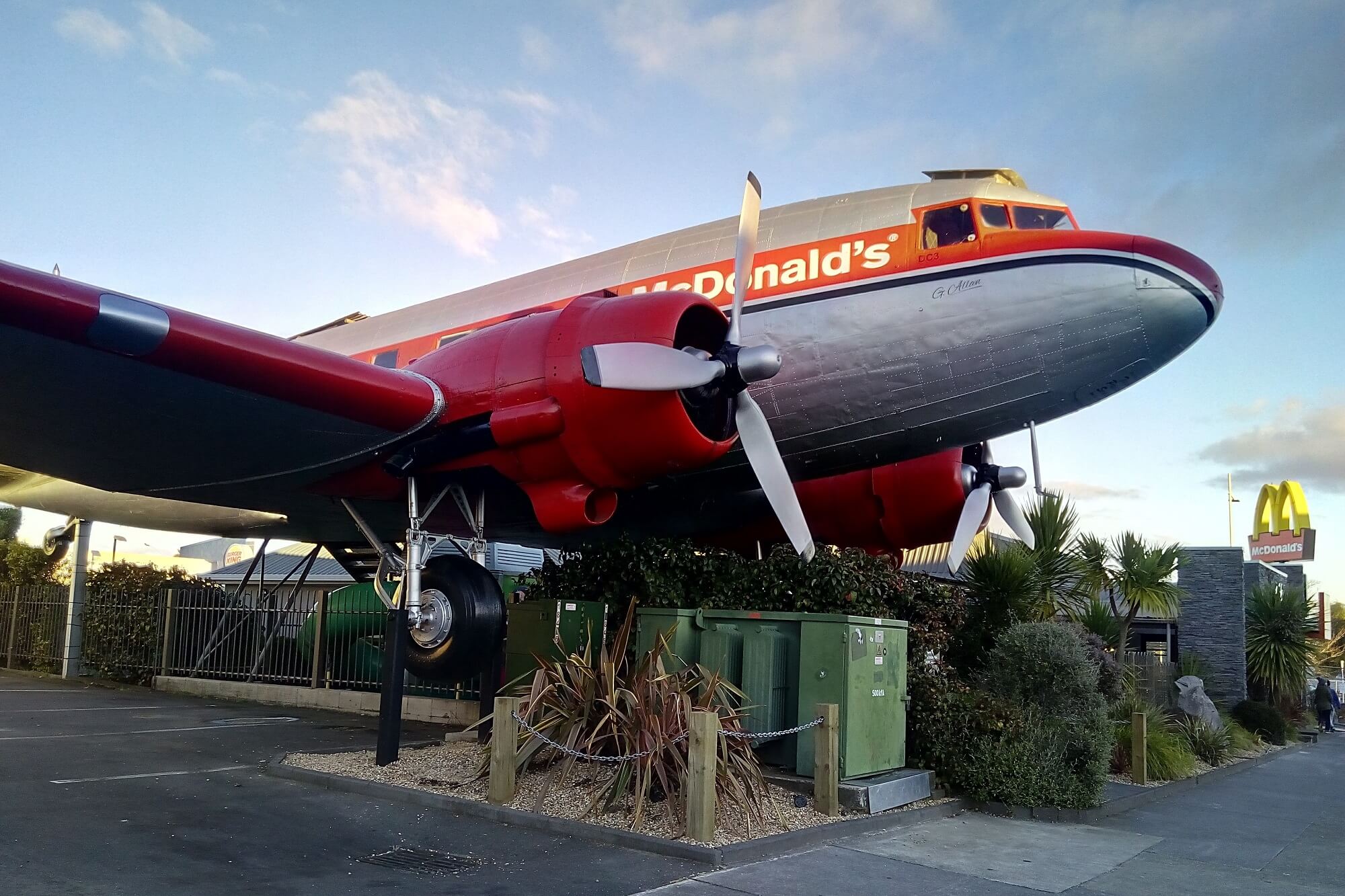
2. Leather airline seat covers given a new lease of life as travel accessories
Portland-based Looptworks is another example of how old planes can be given a second life outside of the aviation industry.
The company, which upcycles and re-purposes abandoned pre- and post-consumer materials into limited-edition products into bags, accessories, and clothing, has introduced a new collection of apparel items hand-crafted from high-quality leather sourced from retired planes belonging to carriers like United, Delta, and Alaska Airlines.
Looptworks has recently repurposed leather airline seat covers, turning them into a selection of bags and wallets suitable for comfortable air travel.
1. Interior design and furniture solutions
There are plenty of options where aluminum from scrap aircraft can be reused, including the production items used for daily use such as beverage cans, aerosols, bottle tops, plates, coins and even window frames.
But some aircraft parts, such as wings or engine compartments, can also be repurposed as a piece of exclusive furniture and can be turned into aviation-themed tables, conference desks, and even chairs.
In 2016, two British entrepreneurs, Daren Hales and Darren Lewington, started an upcycled art and aircraft furniture business aiming to transform modern home and office design with aviation details. The duo established a company called Aerotiques, which turns aircraft materials and components into aviation art and practical, unique furniture varying from large boardroom centerpieces and functional furniture to simple, aviation-themed gifts, such as clocks, desk stands, cufflinks, bracelets, coffee tables, table lamps, mirrors and even bottle openers.
So, there you have it. 10 brilliant examples of how to repurpose or upcycle old aircraft, helping to reduce waste from the aviation industry and create something incredible in the process.

